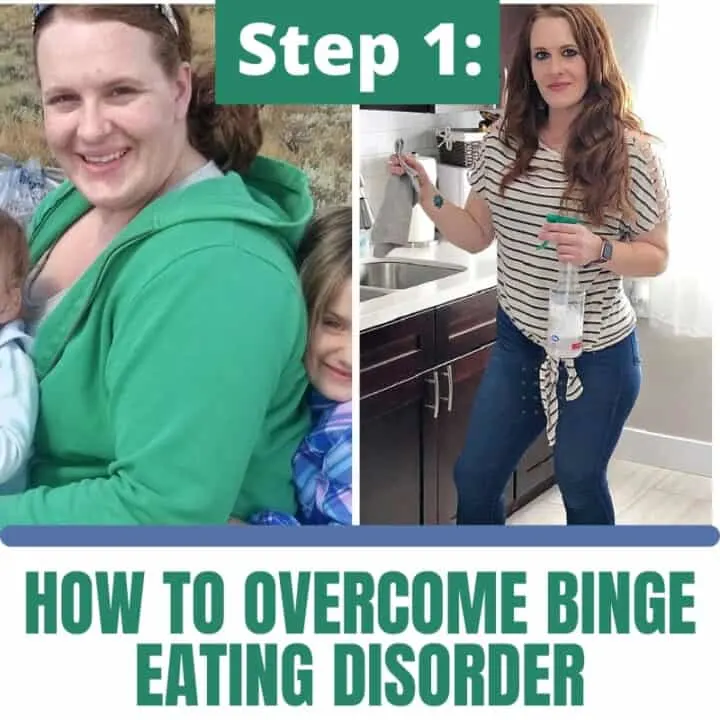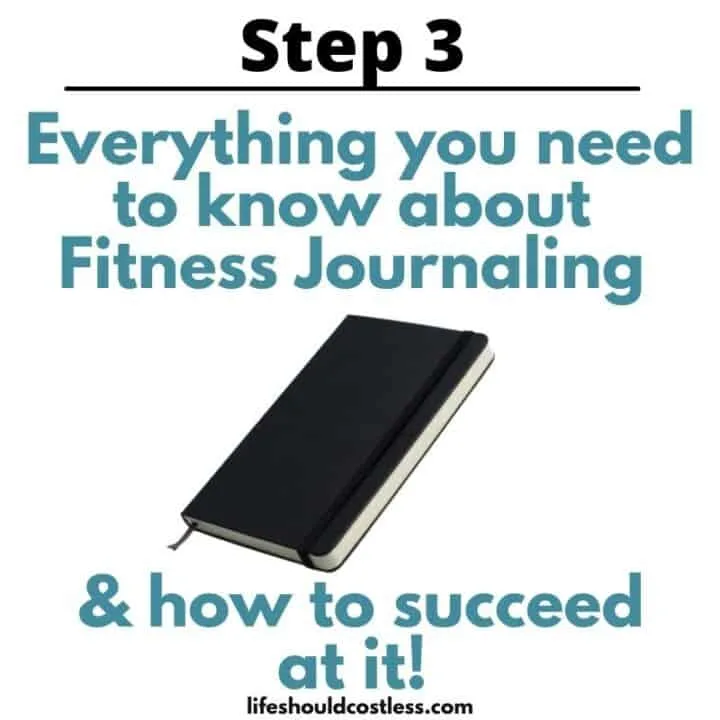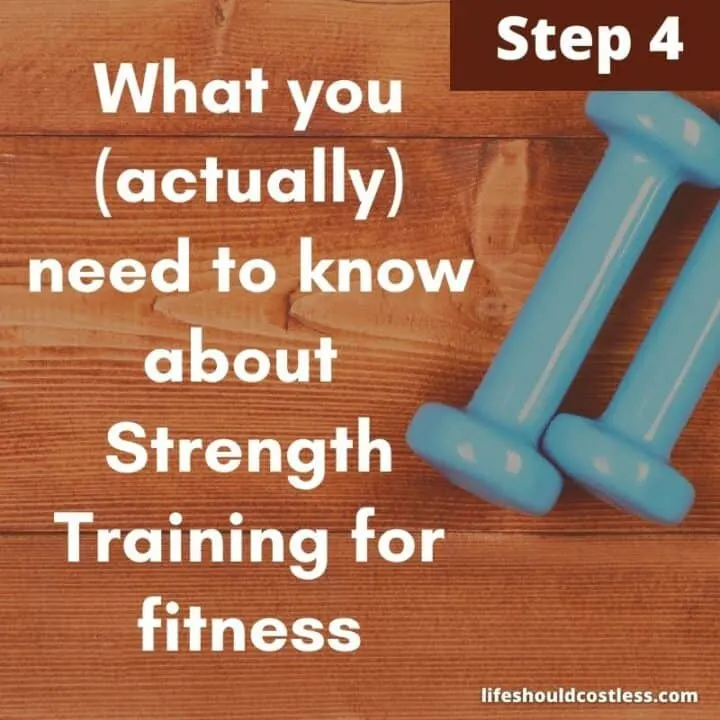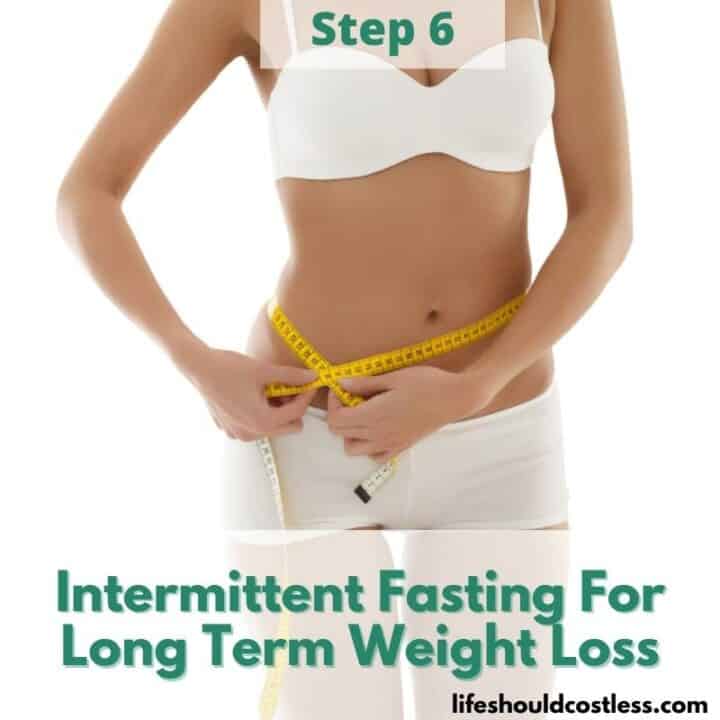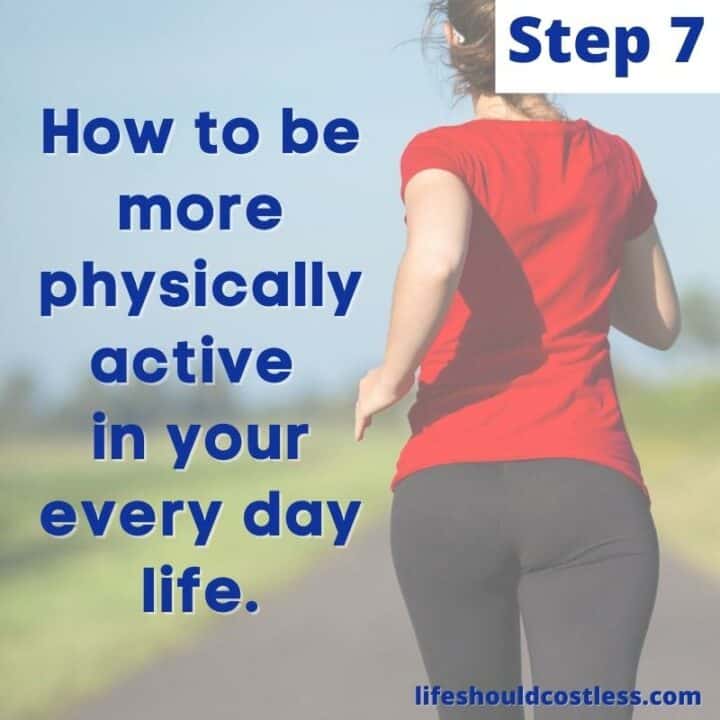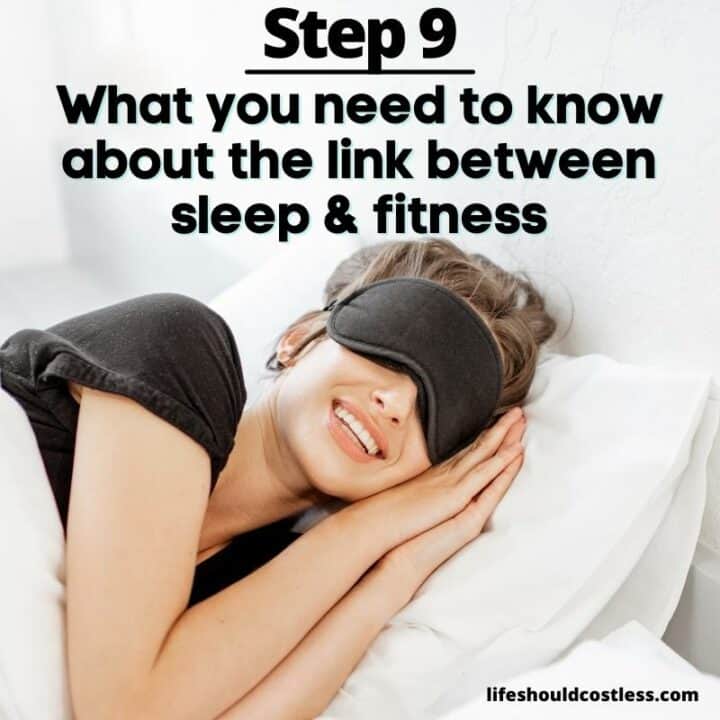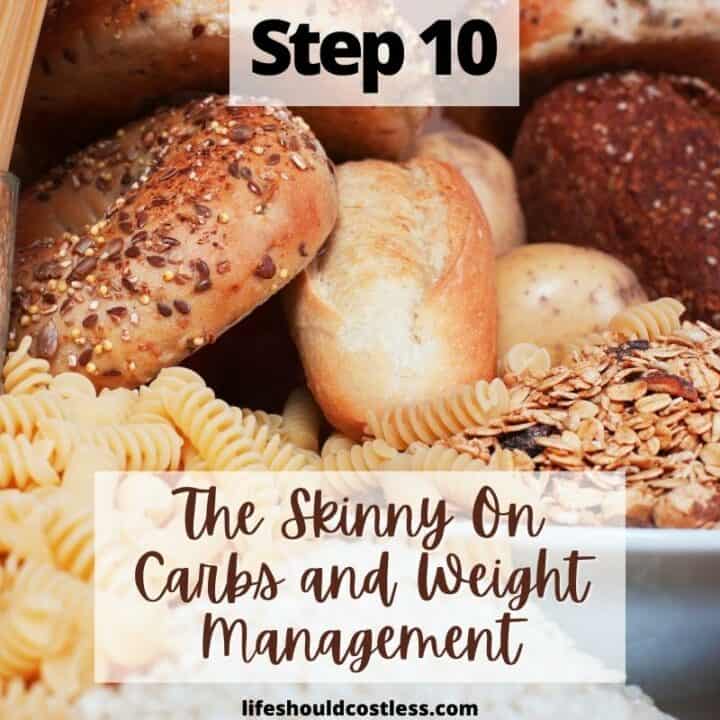In order to get fit & be able to stay that way for the remainder of your life, you will most likely need to learn, or unlearn and relearn, a few things first that will help you along on your journey. In this post, I share step two of my free weight loss series (after battling an eating disorder and losing over 100 lbs): How to understand fitness in general.
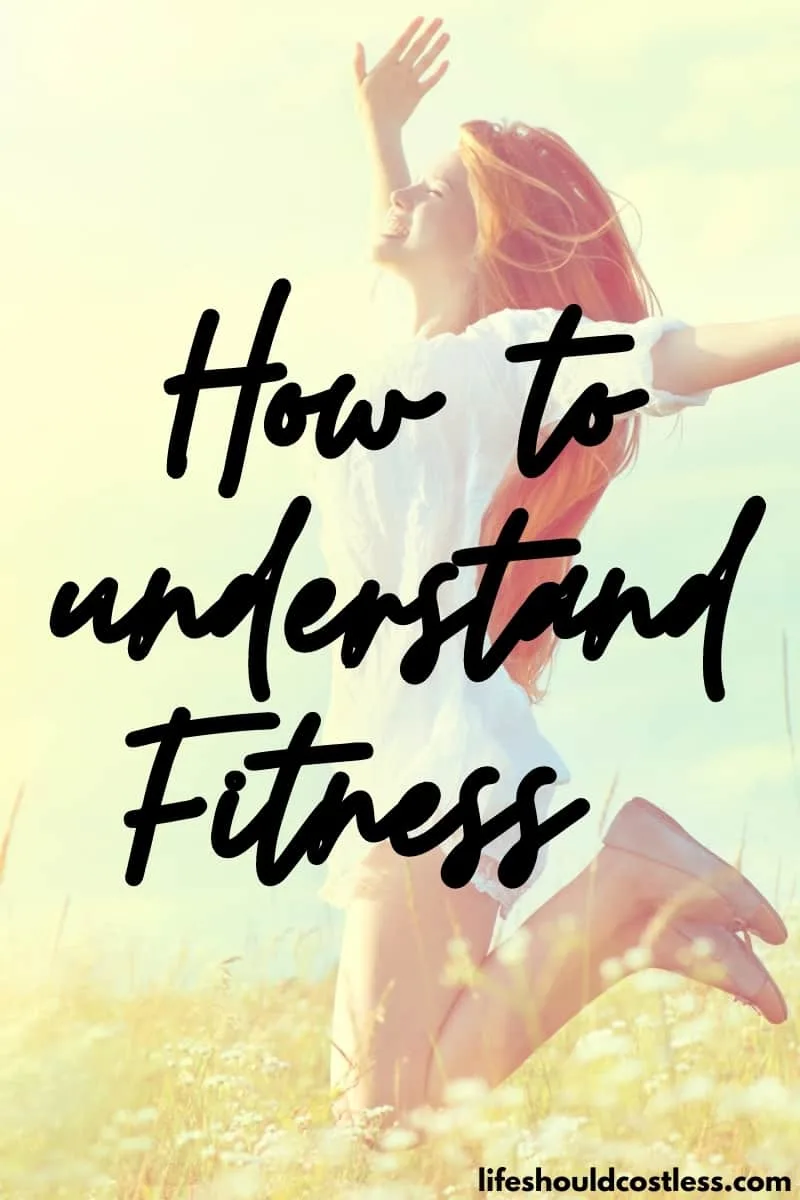
To say that I never really understood fitness (on top of having a binge eating disorder), is probably just about the biggest understatement of the century.
Over the years I had so many tips and advice thrown at me and had so many differing opinions on so many levels (even watching my own mothers weight take violent shifts as she’d do one fad diet after another had me stumped) needless to say that it left me more than a little CONFUSED!
Even when I would go to a Dr. they would just vaguely say things like “you need to move more” or “move more, eat less”…but no one ever took the time to sit down and actually explain it (really break it down) to me on a level that I could understand.
As if dealing with my eating disorder (you can read about how I overcame binge eating disorder here) weren’t a big enough struggle all on its own, when I was trying to get it under control I continually failed because the changes that I thought I was making to be “healthy” were actually too restrictive.
(often I was literally starving myself)
When a person with binge eating disorder feels too restricted, it triggers a binge…or even a series of binges, which then undoes all of the hard work you have been doing prior to that.
If you struggle with food addiction on any level… I bet you know exactly what I’m talking about.
My “aha” moment, when fitness finally started to click in my mind and actually make sense, was when I realized that almost every single thing that I knew about fitness was little more than a marketing scheme that someone somewhere had “cooked up” in order to sell me a product or a membership and it wasn’t necessarily the truth.
Not joking, the more I have figured out how to take care of my body, and how everything works, the more I realize how stupid and damaging some of the ideas out there really truly are.
Yes I too recommend things/products throughout my fitness series, but it is my promise to you that they are always the cheapest/best option, in my opinion, and what I actually use myself…all of my affiliate links are through Amazon, and the cost is the exactly the same to you…but my commission is mere peanuts, so I’m definitely not getting rich in recommending anything.
If you know about my fitness journey, then you know that I have lost well over one hundred pounds, and I have consistently kept it off for years.
So it may be very surprising to you to hear that I not only eat carbs, but I actually eat nearly whatever I want as well (including cheesecake and ice cream!!!).
Fitness pretty much all boils down to learning to balance your eating and your exercise, and knowing a few dietary tricks that will keep you full so that you are never starving yourself… in fact, I rarely ever feel hungry now.
Which is weird because back in the day when I was heavier… I was insatiably hungry all the time!
Go figure though, when you’re not giving your body what it needs on a basic level for nutrition, our brains are giving us signals that are going haywire because we’re treating our bodies like a garbage disposal.
Oh, and guess what else?! I don’t spend hours and hours in the gym…I rarely go there to get my exercise in.
In fact, the only reason that I even have a gym membership is because their tanning is included and it’s cheaper than going to a tanning salon…or once in a while I go there to get a little bit of human interaction when my kids are at their dads (working from home is challenging in that I only see other people if I make up reasons to leave my house or grocery shop).
Everything that you need to do to get fit is things that you can do in your own home, or neighborhood (very inexpensively), so once you understand fitness too, you’ll see that it so much easier than you could possibly imagine to not only get fit, but stay fit for life.
Before I dive into telling you all the eating and fitness habits that I learned to develop to become fit, you need to understand one important thing.
Fitness is just math… literally… it is math!
You see, every day our bodies are doing a math equation…whether we are in denial of that fact or not, it is true.
This math equation is different for everyone because our bodies are different (even if you’re the same height), and so are our eating choices… once you learn to take control of your daily math equation… that is when the magic happens!
YOU CAN DO MATH!
Anyone, including YOU, can do MATH if they have the right tutor that will explain it in a way that makes sense.
What I’m going to teach you is not a fad diet of any sort, and if you’re looking for a “quick fix” to your weight problems…this post series is definitely not for you (I’m a straight-shooter too, so may be a little too blunt for any snowflakes or Karen’s).
This series is for those of you that want to take charge of your life, and to stop drowning in your fitness struggles for good.
It’s going to take time, you didn’t get where you are in a month, so it is incredibly unrealistic to think that you can have your dream body in a very short amount of time.
In my case, there were about twenty years of neglect that needed tending to, and 35 years of just plain not understanding how things worked…so I had to completely retrain my brain, develop healthy habits one step at a time, and pick myself back up every single time that I fell (or fall, it’s still a daily thing to maintain).
Yes, you’re going to have to make peace with the fact that your journey is going to take time.
Luckily for you, I’m going to share a great many of the things that I had to learn the hard way (through a ridiculous amount of trial and error).
Keep in mind that even after I did the mental work to get my binge eating under control, I had an overwhelming amount of “digging myself out of obesity” to do and it took me about two years after I started to really buckle down to get to a healthy body fat percentage.
However, I honestly think that had I known all of the tips and tricks that I am going to share with you all, that I could have gotten to a healthy body fat percentage in as little as nine or ten months.
Let’s just dive right into the basics!
*Please keep in mind that I am no Dr., or personal trainer, or nutritionist, I am just a real life person that has struggled with weight for the bulk of my life and finally figured it out, so I am sharing my journey and tips for you to find some peace with fitness too. Always, consult a health professional before starting any fitness program.*
Table of Contents, Skip Ahead To What You're Looking For
What are the rules of fitness?
Every person’s math equation is different because we are all different… that is actually one of the reasons I feel like I kept failing when I would try to get fit over and over through the years…
I didn’t realize that there isn’t just a blanket right answer for how much a person should be eating or exercising every day because we all are different heights, ages, have a different body composition, have different levels of activity, frankly there are too many differences from person to person to even list them all, but I hope that you get the gist.
To understand your own personal math for your own body, there is a vocabulary lesson that we need to have before I can explain the equation and good ways to apply it to your own life. The first thing you need to know is your basal metabolic rate… or BMR.
What is a basal metabolic rate?
In the most basic terms possible… a basal metabolic rate is the number of calories that your body burns at rest…so think about a lazy day laying there not moving… your body is burning calories just by breathing, thinking, digesting food and water… simply because you are alive.
Knowing your basal metabolic rate, is how to know where to even start in your personal math equation.
The two simplest ways that I know of to find out what your basal metabolic rate is, are to purchase the type of scale that will tell you via an app on your phone (this is the inexpensive, but highly rated one I got on Amazon.
I feel like it is more accurate than the other option), or there are many websites that have a calculator that allow you to type in your info and it will give you a rough estimate based on your height, weight, gender, and age (this is the website I used to calculate my BMR before I got my scale).
The next thing you need to know for your personal math equation is:
How many calories do I burn through daily exercise/movement?
How many calories do you burn, through movement, each day? It’s a question that I often asked myself…but it wasn’t until I found out that there are tools that you can use that will tell you that number, that I was really able to understand it.
I am so thankful that science has advanced to a point that there are simple and inexpensive ways to figure out how many calories we burn through moving our bodies.
There are a ton of exercise/calories burned estimating calculators out there on the internet… but I never really had too much luck with any of them… (feel free to go that route, but I didn’t like any of them enough to use or recommend them) there are just too many differing factors (such as what chores or yardwork I got to that day, or if I needed to spend the day sitting at my desk working).
So in order to know my own personal number of calories that I burn each day through exercise or movement (and to be fairly accurate) I had to get a fitness watch of some sort (they tell you how many calories you have burned that day based on how much you moved, or how many steps you got that day).
The majority of my weight was actually lost when using one of the cheapest, but highest rated fitness watches that I could find on Amazon (this is the basic one that I bought)… it actually wasn’t until I treated myself later on to a nicer one that I realized just how limited the cheap one was.
Keep in mind that if you go the route of buying a cheap one you will need to do a bit more of the math yourself and these watches don’t know how to tell between being jostled in the car or if you actually moved your body, so you will need to keep track a little bit more manually to make sure that you’re not cheating yourself with a bit of discrepancy if you travel much (don’t count those travel steps/calories).
If you go the route of the nicer fitness watch, they use gps and many can even tell what you’re doing just by the movement it senses…anyway, they also tell you what your heart rate is doing and make you a little bit more efficient in calorie burning because you can see on an app how efficient you are being and adjust your behavior accordingly.
Budget permitting, a good quality fitness watch is the way to go to know just how many calories you burn in a day… I honestly wish that I had been able to afford the nicer watch when I was in the thick of my weight loss journey (I feel like I would have hit goals much faster)… but live and learn…
I’m just saying that it is a total gamechanger and if you can swing the expense or even save up for one, it is probably the best investment in myself that I have ever made (this is the nicer watch that I have now, and I will be wearing it until it dies before I upgrade…I LOVE IT!).
Alright, now that you know a couple of good options on how to know what your BMR (basal metabolic rate) is, and how many calories you burned in a day through movement, the next fitness term you need to know is:
What is a calorie deficit?
A calorie deficit basically just means that you burned more calories than you ate or consumed that day. Creating a calorie deficit is how to lose excess weight.
Now that you know those three terms, let’s put them together to create your own personal fitness math equation.
To get your own math equation you need to add:
(Your Basal Metabolic Rate + The Calories You Burned Through Physical Activity/Movement)
That number is going to be different every single day, and for every single person, and it is the number that tells you how many calories that you need to eat in order to make progress.
If you eat less calories than that number (creating a calorie deficit)…BAM…you just lost weight that day!
If you eat the same amount of calories as that number… you maintained your weight.
If you eat more calories than that number, you gained weight.
Keep in mind that if you are using one of the cheaper fitness watches you need to add those numbers together (your BMR plus your calories burned) to do your math, but if you have a nicer watch it adds your BMR plus your calories burned for you.
The more you move, the more calories you burn…and now you know how much moving you actually need to do to make progress!
Once you understand how the math works, you can start being strategic about it and you will soon develop a plan of action to reach your goals(further down in this post I go over some basic tips and tricks to help you make progress until I can write the rest of my fitness series… it’s going to take months of writing to finish it all.)
Knowing how the math works, means that it is up to you how much weight you decide you want to lug around every day… and carrying more than our bodies need is actually pretty exhausting.
I have a very vivid imagination and in order for me to visualize my math in action, I have found that the most helpful way to think about fat loss is to pretend that there is this little fairy that flits into my bedroom every night when I’m asleep, she looks at my math equation for the day, and she distributes fat accordingly.
If I created a calorie deficit that day (burned more calories than I ate), I imagine the fairy with some sort of a spoon, scooping that many fat calories off of my body and taking it away…
If I maintained my weight that day, she leaves me alone.
If I overate, or consumed more calories than I burned, she adds fat to my body.
It’s that simple… you are in charge of the scoop!
Yes, I have given this fairy a name that makes me giggle so when I think about her visiting I refer to her as “The Fat Lard Fairy”. If there can be a fairy that carts off our unwanted teeth, why can’t there be one that hauls away my fat?…lol.
In order to lose weight, I have to keep “The Fat Lard Fairy” busy…in the right way, and consistently. A small scoop each night will really add up over time…and that’s really the key, make small daily goals and be consistent and the “it’s just math” approach will have you making progress in no time…and if you fall on your face and overeat or binge, just pick yourself back up and keep trying.
Once you understand the math, and how to apply it into your daily life (you’ll get the hang of it with daily effort), you become totally in control of what the scale says.
Imagine your fitness journey as if you’re going on a fun trip to a destination you have always wanted to go to… if you run into a car problem (such as getting a flat tire), you don’t just give up and head home…you fix that flat, and you get back on the road, continuing to travel to your dream destination.
The same is true with your dream body, if you “get a flat” and overeat, give yourself a little bit of grace and patience and love, and try harder the next day… eventually you reach your dream destination.
The other thing that I did to help me visualize my calorie deficits was to stop thinking about “pounds I want to lose”…I had to break each pound down into how many calories are in that pound for it to even make sense in my head.
When you consider that one pound of weight/fat loss is 3500 calories, then that means that if I made a 500 calorie daily calorie deficit, I would lose one pound in seven days (or a week).
So, I stopped setting goals such as “to lose five pounds”, I flipped it so that the math made more sense to me…
Now if I want to “lose five pounds”… I break it down into how many calories that is 5 lbs x 3500 calories=17,500 calories that need burned off through creating a calorie deficit… knowing the exact number I need to lose to hit the goal made it so much more attainable in my mind.
I actually made my biggest leaps in my weight loss when I put the scale away for months at a time and focused on, and trusted, my daily math and creating a daily caloric deficit.
Because when I wasn’t continually checking my weight, it allowed my body to build muscle, and to have its natural fluctuations, without me getting discouraged by knowing about them.
Tips and tricks for success in creating a calorie deficit:
*Never eat below your BMR (Basal Metabolic Rate) in your daily calorie consumption. Every diet that I have ever failed had me eating below that number…and it’s just too stinking hard to feel hungry all the time.
You’re literally starving yourself and setting yourself up for failure if you do so. It’s best to get your calorie deficit through exercise/movement.
*Don’t constantly be formal in your workouts… you don’t have to get all dressed up cute and go to the gym in fancy clothes (you don’t need a personal trainer unless you’re into body building or something extreme) get your movement in by walking, playing with your kids, dancing around in your kitchen, cleaning your house.
Chores burn an insane # of calories and that movement counts too, or whatever other movement makes you happy.
Later on in the series I will talk more about exercise…but there is not one single “right way” to get your daily steps or movement in.
How many steps are enough steps to create a calorie deficit?
A simple rule of thumb that I have learned from various sources over the years are:
8,000 daily steps are the minimum number of steps to not be considered sedentary (at least as far a most health insurance companies are concerned).
10,000 daily steps is the number that the makers of the pedometer (back in the day) recommended to be fit… however, it was just an easy number to remember and market, so that was considered “the number to hit” for many years.
12,000 steps a day is actually the current “number of steps per day a person should be getting to be considered fit”… but if you’re like me, and love to eat, I actually have to walk more steps than that to create a calorie deficit… so if you see me walking like a psycho, it’s because I wanted to eat like a psycho that day…lol.
There is no exact answer to “how many steps are enough?” because it depends solely on how much you are eating… so do your math, and keep your eating below that number you got when you added your bmr plus the calories burned through movement, and you will see progress.
Some of my other thoughts to succeed hitting your fitness goals:
- When you hit a plateau (that is when you’re trying hard and your scale just won’t budge) here are some things that may help…make sure you’re drinking enough water, make sure you’re getting enough whole grains/fiber and protein and sleep, and keep your stress levels low as much as possible… also, sometimes you may be trying too hard (exercising too much or having calorie deficits too large)…so find some balance, listen to your body, and adjust your behavior as necessary.
- When counting calories, it’s super helpful to have a good kitchen scale on hand. This is the one that I have, it’s inexpensive and very highly rated on Amazon.
- I believe that in order to succeed in your fitness journey, your health/fitness needs to become one of your top five priorities in order to get it under control…so it’s smart to simplify your life to a point that you can manage making yourself a priority without adding undue stress.
- Remember that until you are at a healthy body fat percentage it is a toxic mindset to tell yourself “I worked out today, I can eat more”… we can’t be thinking like that when we’re still wearing the feasts from the last 20 Thanksgivings… we need to always try to be thinking about creating a deficit if we want results…reprogram your thinking as often as you need to for success!
- For those of you that drink alcohol or things that aren’t water on a regular basis, make sure you’re counting those calories too!
How big of a calorie deficit is too big of a calorie deficit?
There is no blanket answer to this question… but I definitely will give you my personal opinion that should at least give you a little guidance, so you’re not overdoing it.
When I was obese, I found that any time I went over a caloric deficit of 850-1000 calories in a day I was too hungry and it would trigger a binge.
I know when you’re that heavy it is very tempting to try to get your deficit number as high as possible and to lose as much weight as quickly as possible…
But I just don’t think it is very healthy to do so very often or to stick with it when you do (I think doing too much on a regular basis can also cause your body to think it’s starving, so you could not lose at all if you’re not eating enough).
When I dropped down to a healthy body fat percentage, but still wanted to lose more weight (just to be a little bit more comfortable in a bikini), I have found that if I have a calorie deficit that is much over 500 calories in a day it sets me up for failure and I tend to overeat more.
So, just remember slow and steady wins the race (I suggest going by the 500 daily calorie deficit if you have less that 30 lbs of fat to lose).
I also think that losing the weight a little bit slower helps your skin retain a bit of its elasticity… I will go into my fit skin routine later in the series…
I get comments all the time that “you don’t look like you used to be fat” (because I don’t have excess skin hanging off of me even after 100+ lbs of weight loss and having had four babies)…so take that advice or leave it….but I strongly recommend taking it…lol.
That is all that I have to share with you guys about understanding the math of fitness…hopefully I gave you more clarity than adding to any confusion… but I hope you’ll stick around the site and check out the rest of this fitness series, as well as any of my other fitness related posts.
I will have direct links to all of the posts in the series at the bottom of this post as soon as I am done writing them.
If you found this post helpful on any level, please share my direct link via social media or email to anyone that would also enjoy it. Thanks so much for the support! ~Sarah

Follow Me
How to follow & support this site
- If you would like to subscribe to my email list, go here.
- Make sure to follow along via social media, by going here.
- If you would like to learn how to really show your support to this site (at no cost to you), go here.
- If you would like to make a direct donation to the site, go here.
Here are the other posts in the fitness series:
Step 1: How to overcome binge eating disorder:
Step 2: How to understand fitness in general:
Step 3: Everything you need to know about fitness journaling:
Step 4 : What you actually need to know about strength training:
Step 5: Why drinking enough water needs to become part of your daily fitness routine:
Step 6: Intermittent Fasting For Long Term Weight Loss:
Step 7: How to be more physically active your everyday life:
Step 8: How much protein do I need for weight loss?:
Step 9: What you need to know about the link between sleep and fitness:
Step 10: The Skinny On Eating Carbs And Weight Management
Step 11: The Importance Of A High Protein Breakfast
For those of you that would like another option of a “pinnable image” to share, here you go. Thanks again so much for the support!
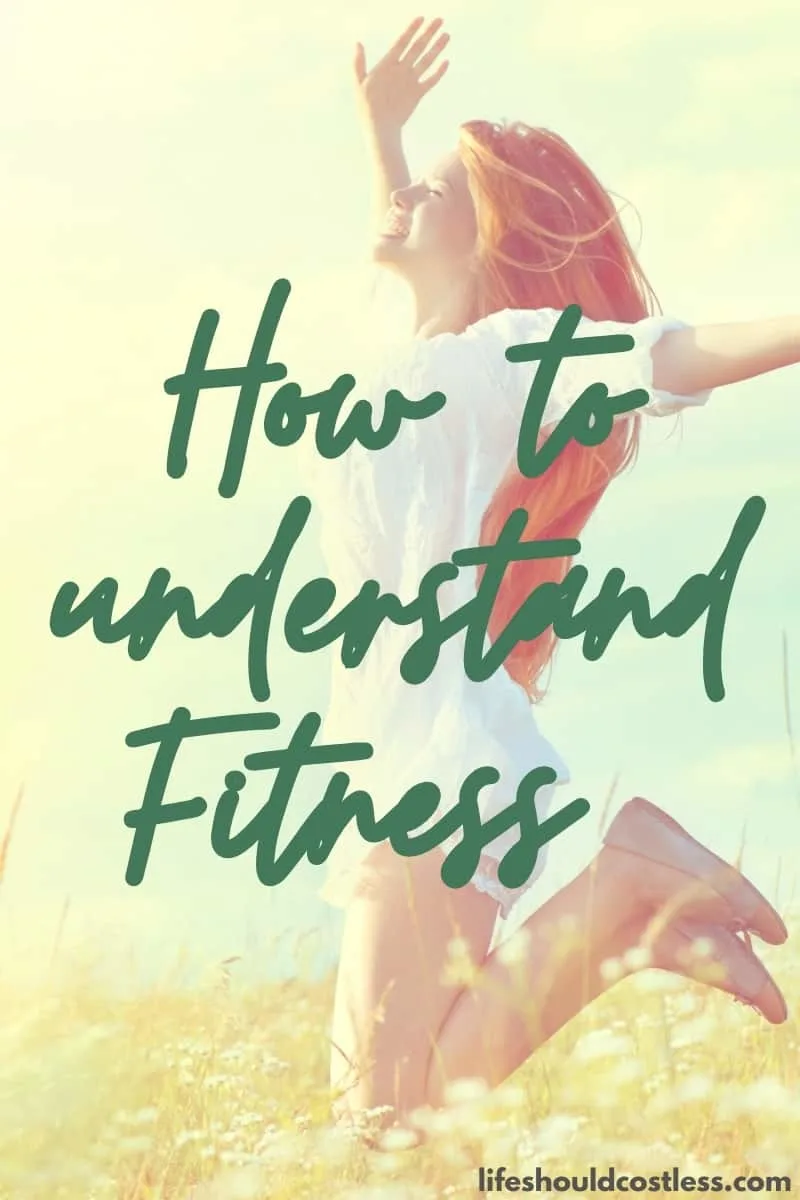
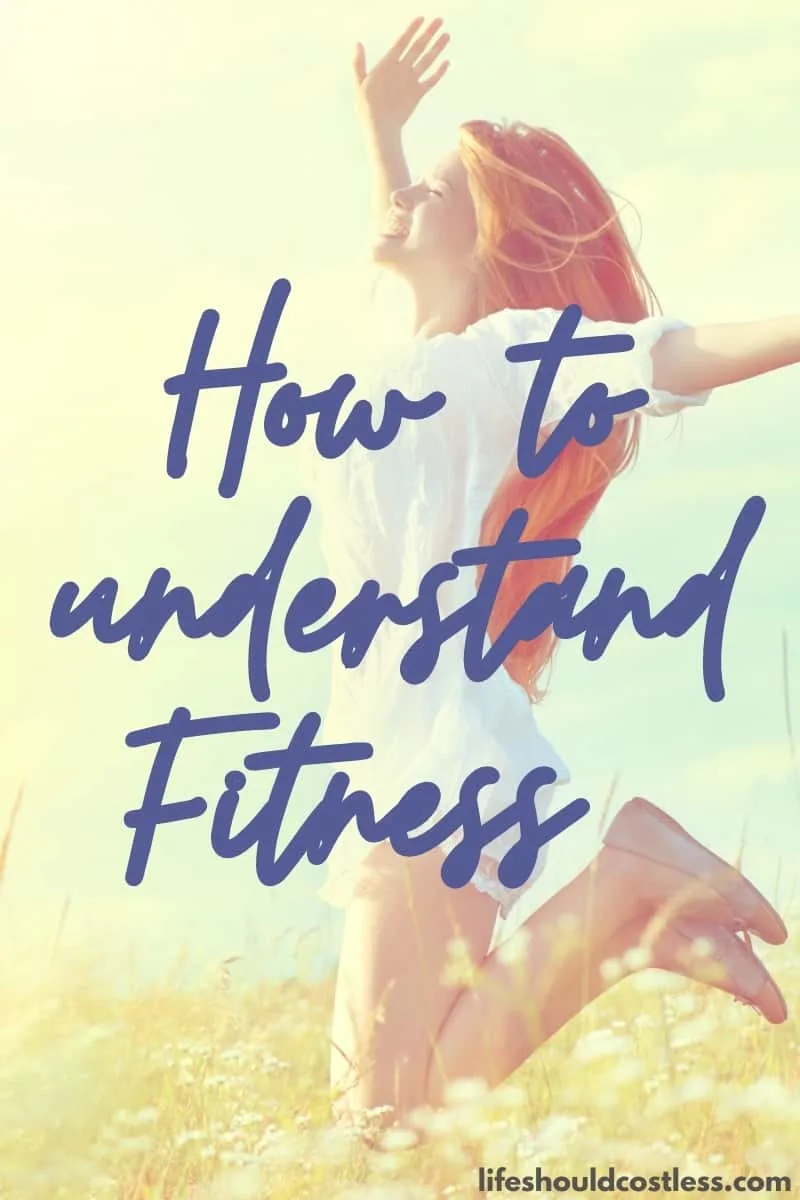
*This article was originally shared to this website on October 31st 2021, and has since been updated to improve user experience, remain current, and to increase share-ability

